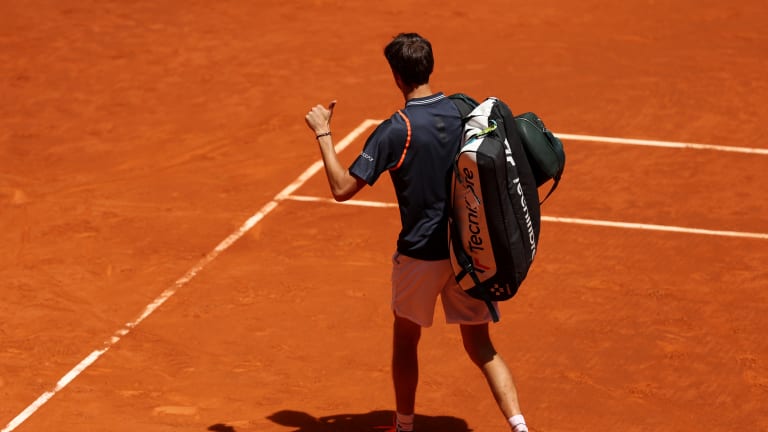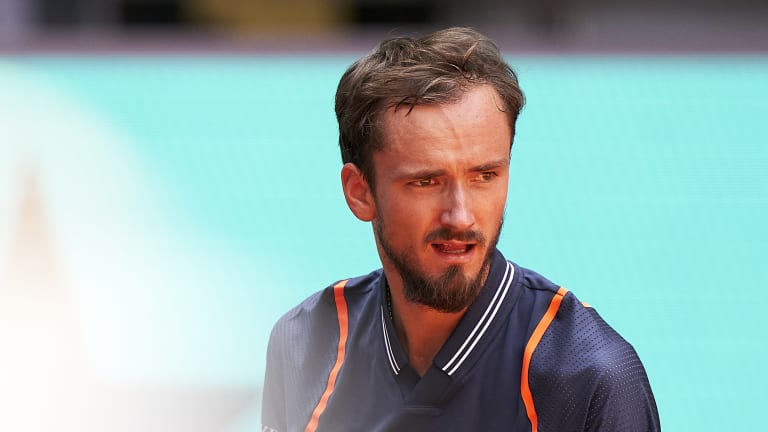Madrid, Spain
Daniil Medvedev's war on clay continues, but it may provide him an advantage down the road
By May 02, 2023Madrid, Spain
Andrey Rublev overcomes fever and praises doctors after winning Madrid Open for the first time
By May 06, 2024Madrid, Spain
Andrey Rublev is the 'most proud' he's ever been after defying adversity in Madrid victory
By May 05, 2024Madrid, Spain
Andrey Rublev rallies, then outlasts, Felix Auger-Aliassime to win Madrid title
By May 05, 2024Madrid, Spain
Big finals don’t get much tighter, or better, than Iga Swiatek and Aryna Sabalenka's melee in Madrid
By May 05, 2024Madrid, Spain
Preview: Andrey Rublev, Felix Auger-Aliassime seeking a turnaround in Madrid final
By May 04, 2024Madrid, Spain
Iga Swiatek saves three match points to beat Aryna Sabalenka in Madrid Open final
By May 04, 2024Madrid, Spain
Iga Swiatek topples Aryna Sabalenka in heavyweight title clash for first Madrid Open crown
By May 04, 2024Madrid, Spain
Preview: Iga Swiatek, Aryna Sabalenka run it back with another all-Top 2 Madrid final
By May 03, 2024Madrid, Spain
Andrey Rublev beats Taylor Fritz to reach Madrid Open final against Felix Auger-Aliassime as Jiri Lehecka joins injured list
By May 03, 2024Madrid, Spain
Daniil Medvedev's war on clay continues, but it may provide him an advantage down the road
The Russian was ousted by compatriot Aslan Karatsev in Madrid—the latest chapter in his pseudo-conflict with the slow surface.
Published May 02, 2023
Advertising

Is Medvedev sandbagging on clay? Consider his words about it, and then his results.
© Getty Images
Advertising

“He’s so far down the road, mentally and with movement, that he’s just off the charts when it comes to how he plays,” Rick Macci says of the always-dangerous Medvedev.
© Getty Images